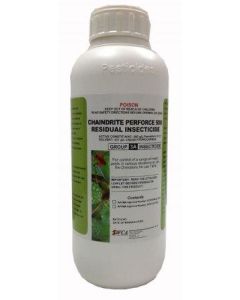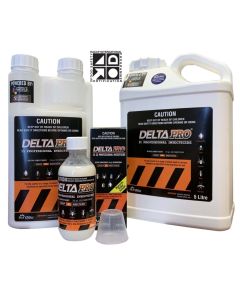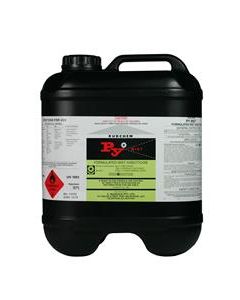Silverfish
- Article
- Silverfish
Silverfish
Scientific Name: Lepisma saccharina
How to identify a Silverfish
Silverfish are wingless insects. Their tapered body and fast wriggling movement, along with their silvery scales gives them some “fish-like” features.

Where are Silverfish commonly found?
Silverfish live in moist areas, with a high humidity. In buildings they are commonly found in roof voids, sub-floors, bathrooms and laundries. They are commonly found in stored cardboard boxes.
Silverfish are nocturnal, running away from light and vibrations – so they like dark, undisturbed areas.
Silverfish have a strong preference for materials containing complex sugars such as starch. Complex sugars are found in many materials including paper, glue, carpet and clothing. Silverfish will also eat other plant and animal materials such as cotton and leather.
Why are Silverfish considered a pest?
Silverfish can cause significant damage to clothing as well as spoil food. However, it is their habit of eating books, photos and documents that makes them a pest.
What is the biology and lifecycle of Silverfish?
Silverfish eggs are whitish and oval-shaped, about 0.8 mm long. They will often be found in groups of up to 60 eggs in cracks and crevices.
Young silverfish look very similar to the adult, except they are smaller and whiter in colour.
Adult silverfish can be up to 3 cm long. If you find a large silverfish, the chances are they have been laying eggs for a long time and you could have a big problem.
Adult silverfish can live for 2-8 years, getting progressively bigger. In that time they can lay a lot of eggs… so a large silverfish may mean you have a big problem
Management Tips for Silverfish
Silverfish Control:
-
Throw out any cardboard boxes used for storage and replace with sealed plastic containers.
-
Carry out a thorough vacuum of rooms (especially the room edges and under furniture) and cupboards.
-
Remove any clothes and belongings from areas to be treated and check for silverfish.
-
If the clothes and belongings are not susceptible to heat, place in a black plastic bag and leave in the sun for 1-2 hours, to kill any silverfish and eggs on the clothes.
Silverfish Prevention:
-
Silverfish like moist / high humidity environments, reducing humidity in susceptible areas is the key; use de-humidifiers, air-conditioning and fans and in bathrooms, kitchens, laundries, roof voids, sub-floors and any other damp areas.
-
Try and find out if there is a reason for the moisture / high humidity and fix it. (Poor drainage under the house, leaking roof, leaking taps, tumble dryer not vented to the outside are common problems).
-
It is impossible to remove all food sources (clothes, paper and books), but you can make it hard for them to access. Keep these items off the floor and stored in sealed containers if possible.
-
Maintain a strict hygiene regime. Not only vacuuming thoroughly, including in all those dark corners, but cleaning up any spilt food and storing open food in sealed containers. Make sure the contents of the vacuum bag are placed in a sealed bag and put in the bin after each use.
-
Use caulking agents to fill any gaps in walls and skirting boards.
-
Carefully check any cardboard boxes you may bring into the house to avoid re-infestation.
PRODUCT SOLUTIONS
-
 Imperator Smoke Generator Insecticide135g/kg Permethrin
Imperator Smoke Generator Insecticide135g/kg PermethrinFor the control of ants, flies, silverfish, cockroaches, weevils, spiders, caterpillars and aphids in commercial, industrial, domestic and public service areas, in glasshouses (ornamentals only) and in agricultural buildings including animal housing.
-
 Fendona Plus 60SC Insecticide60g/L Alpha-Cypermethrin
Fendona Plus 60SC Insecticide60g/L Alpha-CypermethrinFendona Plus 60SC Insecticide is a residual insecticide for control of ants, cockroaches, silverfish, fleas, flies, mosquitos bed bugs, meal moths and spiders in domestic, industrial, commercial and public health situations and for the control of litter beetles in poultry sheds.
-
 Perigen Defence 500EC Residual Insecticide500g/L Permethrin
Perigen Defence 500EC Residual Insecticide500g/L PermethrinPerigen Defence 500 Residual Insecticide is registered for the control of cockroaches, spiders, fleas, ants and more in domestic and commercial situations.
-
 Ficam W Insecticide800g/kg Bendiocarb
Ficam W Insecticide800g/kg BendiocarbFicam W Insecticide is a non-repellent, broad-spectrum residual spray registered for the control of cockroaches, flies, spiders, fleas, ants, silverfish, bed bugs, millipedes and other insect pests.
-
 Coopex Dust Insecticidal Dusting Powder10g/kg Permethrin
Coopex Dust Insecticidal Dusting Powder10g/kg PermethrinCoopex Dust Insecticidal Dusting Powder is registered for the control of cockroaches, ants, fleas, silverfish and bed bugs in and around domestic and industrial premises, food preparation and storage areas. Also for control of mushroom flies in mushroom housing and bees in wall cavities.
-
 Fury 120 SC Insecticide 1L80g/L Bifenthrin, 40g/L Alpha-Cypermethrin
Fury 120 SC Insecticide 1L80g/L Bifenthrin, 40g/L Alpha-CypermethrinFury 120 SC Insecticide is specifically formulated to create a superior, longer-lasting strength general insecticide that works in two powerful ways to rid your clients of all general household pests.
-
 Chaindrite 2 Metered Insect Spray14g/kg Natural Pyrethrin + 60g/kg Piperonyl Butoxide
Chaindrite 2 Metered Insect Spray14g/kg Natural Pyrethrin + 60g/kg Piperonyl ButoxideLow odour natural pyrethrin insecticide for professional pest managers to eliminate flies and insects. This is a synergist aerosol designed to be used in atomiser units such as Bobson and Timemist metered spray units.
-
 Chaindrite Extra Strength Crawling Insect Spray1.4g/kg Imiprothin and 2g/kg Cypermethrin
Chaindrite Extra Strength Crawling Insect Spray1.4g/kg Imiprothin and 2g/kg CypermethrinChaindrite Crawling Insect Spray is a new low odour oil-based professional aerosol insecticide with a powerful flush and kill effect on cockroaches. Chaindrite is an easy to apply aerosol “without the splutter”.This product is an excellent knockdown and flushing agent and has long term residual activity.
-
 Chaindrite Perforce 500 Residual Insecticide500 g/L Permethrin
Chaindrite Perforce 500 Residual Insecticide500 g/L PermethrinChaindrite Perforce 500 Residual Insecticide is formulated for the control of a broad range of insects in various situations as per the Directions for Use table.
-
 Maxum PRO 125 SC Insecticide 500mL125g/L Beta Cyfluthrin
Maxum PRO 125 SC Insecticide 500mL125g/L Beta CyfluthrinMaxumPRO is a robust, fast-acting, knock-down, broad spectrum insecticide for general insect control in domestic and commercial situations, as well as for the control of pest insects of turf and ornamental plants.
-
 Starrdust Pro Duckbill + ‘One-Shot’ 400g20g/kg Permethrin 40:60, 5g/kg Triflumuron
Starrdust Pro Duckbill + ‘One-Shot’ 400g20g/kg Permethrin 40:60, 5g/kg TriflumuronThe StarrdustPRO ‘ONE-SHOT’ is a ready-to-use pod that screws straight onto the StarrdustPRO DUCKBILL Duster head. It is prefilled with 400 grams of premium StarrdustPRO Industrial Strength dusting powder.
-
 Battleaxe Pro Aerosol 420g20g/kg propoxur, 2g/kg tetramethrin, 10g/kg piperonyl butoxide
Battleaxe Pro Aerosol 420g20g/kg propoxur, 2g/kg tetramethrin, 10g/kg piperonyl butoxideBattleaxe PRO Professional Crack & Crevice is an aerosol formulation containing both long lasting and vapour-acting knockdown components.
-
 Demand 100CS Insecticide100g/L Lambda-Cyhalothrin
Demand 100CS Insecticide100g/L Lambda-CyhalothrinDemand 100CS is a cost effective and long lasting insecticide for the controls of ants, cockroaches, fleas, flies, mosquitoes, silverfish and spiders for up to up to 12 months indoors and up to 3 months outdoors. It can be applied to foliage for up to 14 weeks of mosquito control.
Out of stock -
 Demand Duo Insecticide 750mL38g/L Lambda-Cyhalothrin, 125g/L Thiamethoxam
Demand Duo Insecticide 750mL38g/L Lambda-Cyhalothrin, 125g/L ThiamethoxamDemand Duo Insecticide is a general pest spray that controls a wide range of pests, simply and effectively. The unique ZC formulation combines a suspension concentrate (SC) of Thiamethoxam and capsule suspension (CS) of Lambda-cyhalothrin. It is registered for the control of pests including ants, bedbugs, cockroaches, fleas, flies, portuguese millipedes, paper wasps, spiders and more.
Out of stock -
 PY Mist Insecticide4g/L Pyrethrins, 12g/L Piperonyl Butoxide
PY Mist Insecticide4g/L Pyrethrins, 12g/L Piperonyl ButoxidePY Mist is a ready to use insecticide for the control of a range of insect pests and is applied using a cold fogger / portable fogging machine.
-
 Delta Pro 25SC Professional Insecticide25g/L Deltamethrin
Delta Pro 25SC Professional Insecticide25g/L DeltamethrinFor the control of a range of insect pests such as spiders, cockroaches, flies, ants, mosquitoes in various situations.
-
 Clear Out Plus IGR Dust Insecticide 8kg Bucket20g/kg Permethrin, 2g/kg Pyriproxyfen
Clear Out Plus IGR Dust Insecticide 8kg Bucket20g/kg Permethrin, 2g/kg PyriproxyfenClearOut Plus IGR Dust Insecticide is a dual active dustable powder containing Permethrin and Pyriproxyfen for the control of adult and juvenile insects. ClearOut Plus IGR Dust Insecticide is formulated as a light, dustable powder featuring two modes of action in one application to provide a quick knockdown combined with a juvenile insect hormone regulator to stop the breeding life cycle.
-
 Starycide Insect Growth Regulator (IGR)48 g/L triflumuron
Starycide Insect Growth Regulator (IGR)48 g/L triflumuronStarycide is an insect growth regulator (IGR) registered for the control of silverfish, immature fleas and cockroaches in indoor and outdoor situations, and container breeding mosquitoes outdoors.
-
 PY Spray Aerosol Insecticide10 g/kg pyrethrin and 50 g/kg piperonyl butoxide
PY Spray Aerosol Insecticide10 g/kg pyrethrin and 50 g/kg piperonyl butoxidePY Spray Aerosol Insecticide is a ready to use professional aerosol for control of a range of insect pests in various situations. Suitable for crack and crevice applications. PY Spray Aerosol Insecticide is an industrial strength spray, suitable for flushing or as a space spray.
-
 PY Fog Insecticide4g/L Pyrethrins, 12g/L Piperonyl Butoxide
PY Fog Insecticide4g/L Pyrethrins, 12g/L Piperonyl ButoxidePY Fog is a ready to use, broad spectrum insecticide for the control of a range of insect pests in various situations using a thermal fogging machine.
-
 Cislin 25 Professional Insecticide25g/L Deltamethrin
Cislin 25 Professional Insecticide25g/L DeltamethrinCislin 25 Professional Insecticide is a broad spectrum low odour insecticide with excellent residual activity.
-
 Delforce Residual Insecticide 10SC10g/L Deltamethrin
Delforce Residual Insecticide 10SC10g/L DeltamethrinDelforce Residual Insecticide 10SC is a water-based insecticide for the quick knockdown of spiders and general insects at very low doses. Delforce is also formulated for the control cockroaches, fleas, spiders, ants, silverfish and of a range other insects.
-
 Suspend Flexx Insecticide25g/L Deltamethrin
Suspend Flexx Insecticide25g/L DeltamethrinSuspend Flexx Insecticide is a synthetic pyrethroid (3A) formulation for the knockdown and residual control of a range of insect pests in various indoor and outdoor situations.
-
 Dragnet Dust Insecticidal Powder2% Permethrin
Dragnet Dust Insecticidal Powder2% PermethrinDragnet Dust Insecticidal Powder is a 2% permethrin, broad-spectrum insecticide dust designed to reach into limited access areas. Dragnet Dust's super-fine formulation gives excellent coverage and spread. It is registered for the control of ants, spiders, fleas, cockroaches, silverfish, bed bugs, wasps, and bird mites in domestic, institutional & industrial premises. Also for the control of hide beetles, mushroom, sciarid flies and Potato moths.
-
 Killgerm AF Cockroach & Crawling Insect Monitor Glue Pads (Pack of 100)Replacement Glue Pads
Killgerm AF Cockroach & Crawling Insect Monitor Glue Pads (Pack of 100)Replacement Glue PadsThe Killgerm AF Cockroach & Crawling Insect Monitor Glue Pads are premium replacement glueboards designed to enhance the effectiveness of the AF monitoring stations. These high-quality glue pads are infused with powerful attractants to lure a variety of crawling insects, including cockroaches and silverfish, ensuring accurate and reliable pest monitoring.
-
 Starrdust PRO One-Shot Insecticidal Dust 400g20g/kg Permethrin, 5g/kg Triflumuron
Starrdust PRO One-Shot Insecticidal Dust 400g20g/kg Permethrin, 5g/kg TriflumuronThe Starrdust PRO One-Shot Insecticidal Dust 400g is an industrial-strength dust designed for use with the Starrdust PRO Duckbill Duster. It is a ready-to-use broad-spectrum insecticide with a unique formulation. It controls a wide range of insect pests including cockroaches, silverfish, spiders, ants, fleas, carpet beetles, bed bugs, European wasps, feral honey bees, bird mites, subterranean termites, hide beetles, millipedes, woodlice and clothes moths.
-
 Starrdust PRO One-Shot Insecticidal Dust 19 x 400g + Duckbill20g/kg Permethrin, 5g/kg Triflumuron
Starrdust PRO One-Shot Insecticidal Dust 19 x 400g + Duckbill20g/kg Permethrin, 5g/kg TriflumuronA convenient kit of 19 x Starrdust PRO One-Shot Insecticidal Dust 400g Pods and a bonus Duckbill Duster. StarrDust PRO is an industrial-strength dust designed for use with the Starrdust PRO Duckbill Duster. It is a ready-to-use broad-spectrum insecticide with a unique formulation. It controls a wide range of insect pests including cockroaches, silverfish, spiders, ants, fleas, carpet beetles, bed bugs, European wasps, feral honey bees, bird mites, subterranean termites, hide beetles, millipedes, woodlice and clothes moths.
-
 Taser Pro 800 WP Insecticide800g/L Bendiocarb
Taser Pro 800 WP Insecticide800g/L BendiocarbTaser Pro Insecticide is a residual broad spectrum non-repellent spray for the control of a wide range of insect pests in domestic, farm, agricultural, industrial, commercial and public service buildings.
-
 Tempo Residual Insecticide 1L25 g/L betacyfluthrin
Tempo Residual Insecticide 1L25 g/L betacyfluthrinTempo Residual Insecticide is a fast-acting, knock-down, broad-spectrum insecticide for general insect control in domestic and commercial situations, as well as for the control of pest insects of turf and ornamental plants.
-
 PyMatic Metered Aerosol Insecticide14g/kg Pyrethrins and 60g/kg Piperonyl Butoxide.
PyMatic Metered Aerosol Insecticide14g/kg Pyrethrins and 60g/kg Piperonyl Butoxide.PyMatic Metered Insecticide is registered for use in automatic aerosol dispensers for total insect control in enclosed areas. Py Matic aerosol will dispense approx. 3,000 metered sprays and provide control for up to 30 days.
-
 Starrdust PRO Insecticidal Dust20g/kg Permethrin 40:60, 5g/kg Triflumuron
Starrdust PRO Insecticidal Dust20g/kg Permethrin 40:60, 5g/kg TriflumuronStarrdust PRO Insecticidal Dust is a ready-to-use, broad spectrum insecticide with a unique formulation. It controls a wide range of insect pests including cockroaches, silverfish, spiders, ants, fleas, carpet beetles, bed bugs, European wasps, feral honey bees, bird mites, subterranean termites, hide beetles, and 3 new pests not on any dust product in Australia – millipedes, woodlice and clothes moths.
-
 Clear Out Plus IGR Dust Insecticide 8kg Carton20g/kg Permethrin, 2g/kg Pyriproxyfen
Clear Out Plus IGR Dust Insecticide 8kg Carton20g/kg Permethrin, 2g/kg PyriproxyfenClearOut Plus IGR Dust Insecticide is a dual active dustable powder containing Permethrin and Pyriproxyfen for the control of adult and juvenile insects.
-
 Killmaster Zero Pest Insecticide Strip 65g
Killmaster Zero Pest Insecticide Strip 65gKillmaster Zero Pest Strip is a highly effective, long-lasting solution for managing a wide range of flying and crawling insect pests, including cockroaches, moths, silverfish, ants, and flies. Designed for non-living areas such as storage spaces, store rooms, and industrial bins, this pest strip provides hassle-free protection for up to 4 months.
Out of stock -
 Clear Out IGR Dust Insecticide Pods (11 Pods x 350g)20g/kg Permethrin, 2g/kg Pyriproxyfen
Clear Out IGR Dust Insecticide Pods (11 Pods x 350g)20g/kg Permethrin, 2g/kg PyriproxyfenClearOut IGR Dust Insecticide Pods bring the proven performance of ClearOut Plus IGR Insecticide Dust into a compact, easy-to-use 350g pod. Designed for professional pest controllers, these pods eliminate the hassle of decanting — simply screw your duster directly onto the pod using the adaptor and start applying.
JOIN OUR NEWSLETTER NOW!
Be the first to hear about the latest specials, products, tips and ideas.

